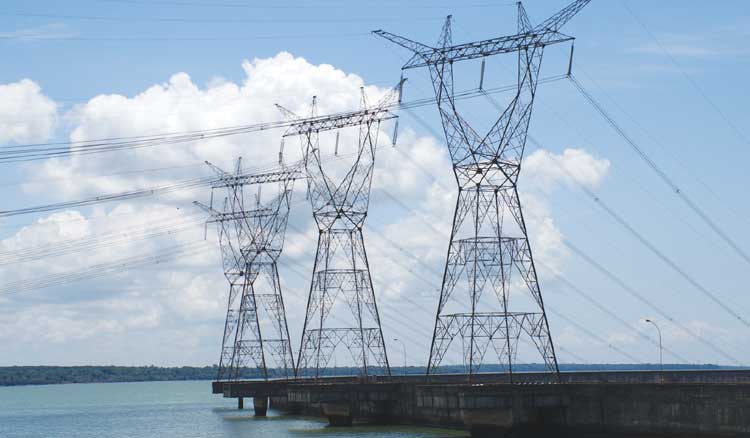It’s an activity filled with nuggets of delicious irony. For example, South Africa is part of the Southern African Power Pool (SAPP), a conglomerate of African countries that share power amongst themselves. Its existence is apparently meant, to quote the Department of Energy’s website, “to delay capital expenditure on new plants due to the existence of interconnections and a power pool in the region”.
However, what’s more interesting is how power distribution parallels that of modern logistic distribution. It’s an analogy with a lot of resonance; power transmission concerns moving power from power stations to substations while power distribution is how those substations deliver power to us.
Power transmission is efficient – it can deliver power at high voltage, which reduces the current and, by Joule’s law, the energy expended to transmit it over the long distances required. But we don’t use voltage that high, so it has to be converted by substations to a lower voltage, which reaches more individual users but is less efficient.
In many ways, these parallel primary and secondary distribution quite closely. It’s an analogy used by power producers themselves The United States Department of Energy (DoE) has an interesting page on power transmission planning that highlights a 2002 study on how the USA’s power transmission infrastructure was suffering from congestion and bottlenecking, having failed to keep up with the demands of the country.
They proposed several recommendations for bringing transmission up to scratch, ideas that make perfect sense in a logistics distribution context as well. I felt it worthwhile to dig into some of their current recommendations and philosophies.
One of the first is ‘Load as Resource’, and I thought this was a particularly powerful idea. Load, as you no doubt know, is the power demand. In South Africa, we currently deal with this load by simply getting rid of it. ‘Load as resource’ attempts to not only control demand but assess response to strategies like price signaling and thereby characterise different types of load. In other words, it tries to actively manage the load it has in a way that benefits power distributors but not necessarily via direct profit (To be fair, Eskom has attempted this with the ‘paying more during peak periods’ paradigm with little response from their customer base).
Demand can drive logistic distribution, but as a resource it becomes a way of potentially reducing costs, balancing workload amongst drivers, reducing warehousing costs and moving stock. An example might be to provide a discount programme to promote early purchase and delivery of goods for peak periods – making it attractive for clients to take on the cost of warehousing/storage themselves.
Obviously, this could potentially shift the peak period rather than alleviate it, which is why the second point is so important. The US DoE uses, to paraphrase, “a vast variety of tools, technologies and design principles to facilitate the modeling, simulation, and computation of the market, market behaviour and its subsequent impact on market performance.”
It regards the review and analysis of market permutation – and the impact of strategies of price signaling – of utmost importance in ensuring the reliability of the market.
Distributors are no stranger to the need to create a reliable supply and demand for their products, but may choose to forgo the necessary tools or services to accurately model and gauge the effectiveness of these strategies.
The US DoE also recognised that the ability to respond in real-time and manage reliability as and when fluctuations occurred was essential. They’re currently in the process of developing and implementing what they consider the ‘next stage’ of supervisory tools. While there are many considerations that power creators don’t have to concern themselves over – distributors have little control over, say, the quality of the network they use for transport – it serves as a strong reminder of some best practices in the distribution space. •

.jpg)


